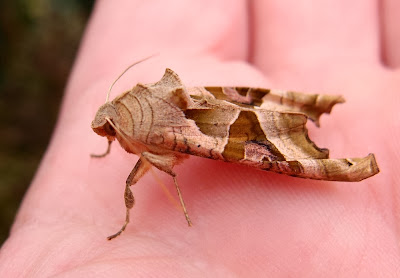This afternoon the weather brightened up as forecast and I noticed a few Blackbirds starting to feed on the Rowan berries in the garden. Each bird didn't feed for very long and only took 3 or 4 berries at each visit. Some dropped a fair proportion of the berries they picked and it seemed to be a case of the bird letting them slip rather than actively discarding them.
Both adults and juveniles were involved so it is unlikely to be related to experience. The fruit are quite large and a Blackbird's beak is fairly long and narrow plus the gape isn't large like a Waxwing's so they can't just throw them into the back of their throat. They simply seem to lose control as they move them back along the beak towards the throat.
 |
| This bird loses this Rowan berry as can be seen in the next photo. |
 |
| Full stretch |
 |
| A bit of a mouthful |
This is the first time my Rowan trees have kept their berries into November; they usually get stripped bare by early October. There is a bumper crop of Rowan berries this autumn and I am noticing heavily laden trees in places where I didn't know Rowan trees existed. It remains to be seen how long this glut will last and what birds it may attract.
Not much to report on the ringing front with heavy showers and or strong winds limiting ringing to a brief spell in the garden yesterday morning. That session produced another 13 new and 4 retrap Goldfinches along with new singles of Blue Tit, Greenfinch and Collared Dove. Two of the retrap Goldfinches were adults that had been ringed as juveniles last year and were duly photographed to add to my bank of photos of known age birds.








































